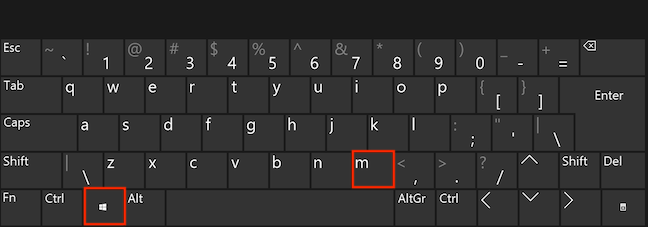

- #HOW TO MAKE COMPUTER SCREEN SMALLER SHIFT CTRL AND MINUS FULL#
- #HOW TO MAKE COMPUTER SCREEN SMALLER SHIFT CTRL AND MINUS WINDOWS 10#
- #HOW TO MAKE COMPUTER SCREEN SMALLER SHIFT CTRL AND MINUS PC#
- #HOW TO MAKE COMPUTER SCREEN SMALLER SHIFT CTRL AND MINUS MAC#

Application Switcher: Press and hold the Command key and then press the Tab key until you find the app icon you want to switch, then release the key.
#HOW TO MAKE COMPUTER SCREEN SMALLER SHIFT CTRL AND MINUS FULL#
Press Esc or press Control + Command + F again can escape the full screen.Control + Command + F: Trigger full-screen mode.Click the green Full-Screen button on the top left of the window.
#HOW TO MAKE COMPUTER SCREEN SMALLER SHIFT CTRL AND MINUS MAC#
Some easy ways can bring your Mac into full-screen mode.
#HOW TO MAKE COMPUTER SCREEN SMALLER SHIFT CTRL AND MINUS PC#
Win key + L: Lock the PC or switch accounts.Win key + G: Turn on the Game bar when a game is open.Win key/ Ctrl + Esc: Open/close Start Menu.Ctrl + V: Paste the copied contents from the clipboard.Ctrl + C: Copy selected items to clipboards.Ctrl + Shift + Esc: Open the Task Manager.Alt + Tab: Switch between the open applications.Alt + Space together and then click S: Resize the screen.Alt + Enter is used when you are playing a game or watching a video and need to access it in full-screen mode but not in a window.Windows key + D to display the desktop.Windows key + M to minimize all the windows.

Windows key + Up arrow to Minimize the current window.Windows key + Left arrow to Maximize the current window and move it to the right side of the screen.Windows key + Left arrow to Maximize the current window and move it to the left side of the screen.Windows key + Down arrow to Minimize the current window.Windows key + Up arrow to Maximize the current window.Enter the Full Screen Without Shortcuts.This will open the troubleshooting screen with system repair options. Continue to hold down the Shift key and click Restart.
#HOW TO MAKE COMPUTER SCREEN SMALLER SHIFT CTRL AND MINUS WINDOWS 10#
If you want to use the system repair options and Windows 10 is still booting and allowing you to log on, click the Windows logo in the lower left corner of the taskbar and then hold down the Shift key while clicking the power button directly above it. Try different arrow keys if you’re not sure which direction the window disappeared. Then press the arrow keys to move the window back into the visible area of the screen. If a window moves off your screen or is no longer accessible due to another error, hold down the Shift key and right-click the taskbar icon of the missing window. If you hold down the Shift key, the AutoRun task will not be executed on the drive. The same applies when you insert a CD/DVD or USB flash drive. If you hold down the Shift key when you log on to Windows, the programs in the Startup folder will not run automatically. This LED tells you whether Caps Lock is on. On the top right side of many keyboards, you’ll see a LED which usually has a lock symbol with the letter A. The name ‘Caps Lock’ also comes from old typewriters, where you could mechanically lock the Shift key with a lever. If you press this key, the function of the Shift key is activated until you press Caps Lock again. Directly above the Shift key, there is a Caps Lock key. You do not need to hold down the Shift key to type long sections of text in capital letters. When the carriage shifted up, the uppercase letter struck the ribbon instead of the lowercase letter. Each type hammer had an uppercase and a lowercase character, one above the other. This would cause the type hammer to strike the ribbon and the paper at a different point. Originally, when you held down the Shift key on a typewriter, the carriage holding the roller and the paper would ‘shift’ upwards by about a half an inch. The term ‘Shift’ dates back to the days of mechanical typewriters.


 0 kommentar(er)
0 kommentar(er)
